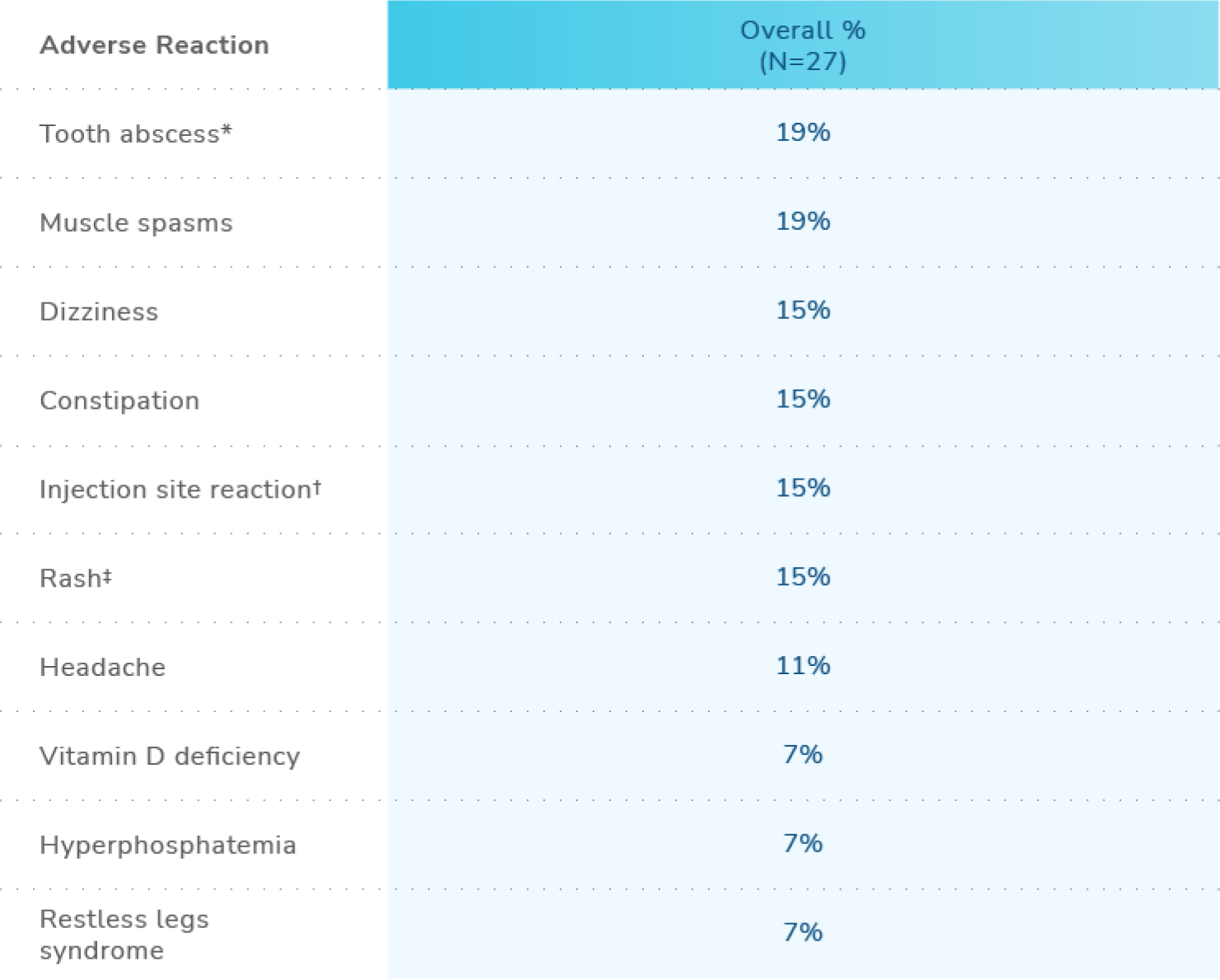Safety

CRYSVITA clinical safety profile in adult patients with TIO1
Adverse reactions reported in adult patients with TIO, based on Study 6 and 7 (N=27)1

The safety of CRYSVITA in patients with TIO was demonstrated in 2 single-arm clinical studies (Study 6 and Study 7) that enrolled a total of 27 patients. Fourteen patients were male, and patients ranged from 33 to 73 years of age. The mean dose of CRYSVITA was 0.77 mg/kg every 4 weeks and the mean duration of exposure was 121 weeks.1
There were no significant changes in frequency, type, or severity of adverse reactions reported through 144 weeks, compared with prior clinical studies in patients receiving CRYSVITA (N=162).1
*Tooth abscess includes: tooth abscess and toothache.
†Injection site reaction includes: injection site reaction, injection site pain, and injection site swelling.
‡Rash includes: rash and rash papular.

Hypersensitivity reactions1
In the phase 2 studies, 22% of patients experienced a hypersensitivity reaction, which were mild or moderate in severity. The most frequent hypersensitivity reactions were eczema (11%) and rash (11%).
Hyperphosphatemia1
In the phase 2 studies, 7% of patients experienced hyperphosphatemia, which was managed with dose reduction.
Injection site reaction1
The frequency of injection site reactions was 15% (injection site reaction, injection site pain, and injection site swelling). Injection site reactions were generally mild in severity, required no treatment, and resolved in all cases.
Restless legs syndrome1-4
In the phase 2 studies, 7% (2/27) of patients experienced symptoms of restless legs syndrome, which were mild and did not require treatment interruption.
Immunogenicity1
As with all therapeutic proteins, there is potential for immunogenicity. The detection of antibody formation is highly dependent on the sensitivity and specificity of the assay. Additionally, the observed incidence of the antibody (including neutralizing antibody) positivity in an assay may be influenced by several factors, including assay methodology, sample handling, timing of sample collection, concomitant medications, and underlying disease. For these reasons, comparison of the incidence of antibodies to CRYSVITA in the studies described in this website with the incidence of antibodies in other studies or to other products may be misleading.
14% (2/14) of patients in Study 6 and no patients in Study 7 developed anti-drug antibodies with no neutralizing antibody detected.

Ready to start your patients on CRYSVITA?
Take the first step by filling out the enrollment form.


